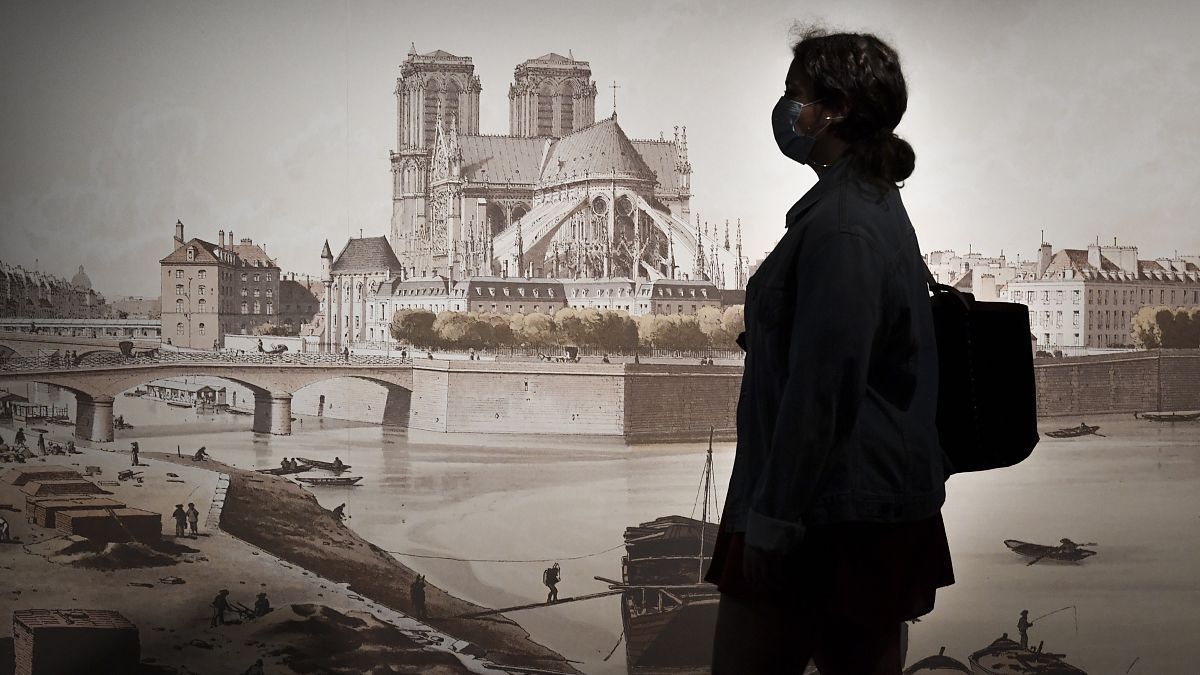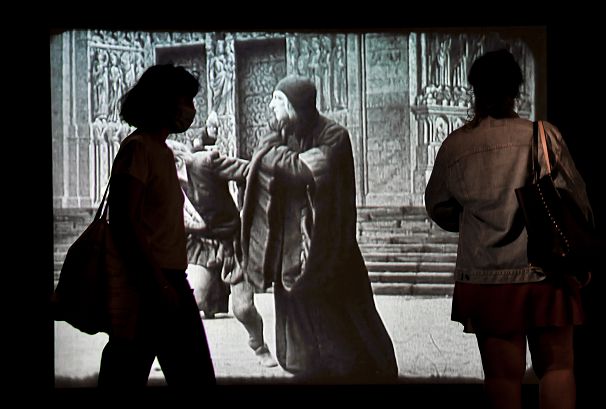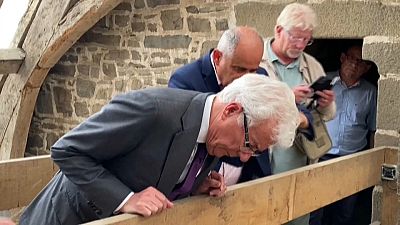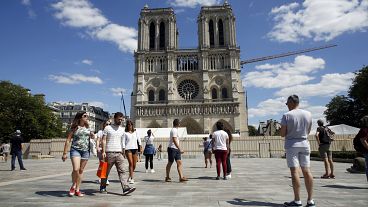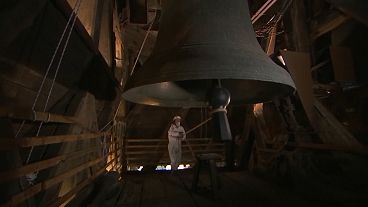The crypt is the first site situated close to the cathedral to reopen since the fire of April 2019 destroyed the spire and much of Notre-Dame's roof.
The crypt of Notre-Dame de Paris has reopened with an exhibition paying homage to writer Victor Hugo and architect Eugene Viollet-Le-Duc and their role in the resurrection of the cathedral in the 19th century.
The site is the first part of the wider cathedral complex to reopen since the devastating fire of April 15, 2019. The crypt wasn't damaged but the blaze gutted the interior of Notre-Dame and toppled its famous spire.
But it suffered from severe toxic lead-dust fallout after the fire and the entire site had to be decontaminated.
"In order to decontaminate the crypt we had to decontaminate the forefront of the cathedral as well and it took a long time because we had to repeat the operation several times. Every time we thought it had worked, and in fact no, it hadn't. So, decontamination, then the pandemic, it took a long time. Actually, this exhibition was ready one year ago." Anne de Moudenard, chief curator of the exhibition told AP.
Visitors to the crypt can discover the remains of Gallo-Roman fortifications and thermal baths there, but the exhibition Notre-Dame de Paris from Victor Hugo to Eugène Viollet-le-Duc tells a more recent story; of the cathedral's comeback from abandonment to the celebrated monument it is today.
Based on a collection of old and fragile photos, the display is accompanied by drawings, paintings, and extracts of films commemorating Viollet-le-Duc who led the restoration of the cathedral, including the redesigning and rebuilding of its medieval spire between 1844 and 1864, and Victor Hugo, whose gothic novel "Our Lady of Paris" or "The Hunchback of Notre-Dame" helped win public backing for the restoration of the building which had been left in a state of abandon and decay.
"The project was born very quickly after the fire, from a desire to pay homage to the cathedral. I worked on the photographs which allow us to follow the renovation site in the 19th century, " de Mondenard told AFP.
Notre-Dame was badly vandalised in the early 19th century, and city authorities planned to tear it down when Hugo called for "War against the Demolishers" in a pamphlet published in 1825.
In 1831 Hugo published his novel and inspired popular enthusiasm for Notre-Dame and its Gothic architecture.
"Victor Hugo wanted to preserve the historical monuments of France, which in the 19th century were in a terrible state of conservation. He was against the movement of the time that advocated leaving behind the classical constructions and opting for more modern elements," explains curator of the crypt and director of the photography collection at the Carnavalet Museum in Paris, Sylvie Robin.
"Hugo inspired Parisians by placing the cathedral as the protagonist of his novel and Viollet-le-Duc extracts from its pages ideas and characters that he captures in the new image of the cathedral," Robin told EFE.
Extracts from a 1911 silent film by Albert Capellani show the cathedral given over to the tragic and tortured fates of Hugo's characters. Esmeralda and the hunchback Quasimodo.
Three-dimensional reproductions of the cathedral are also exhibited via an interactive video, as well as 19th-century sketches of plans for the central nave.
The restoration of Notre-Dame was completed in 1864 with the 93-meter spire as its centrepiece. After it was destroyed in the 2019 fire, French President Emmanuel Macron promised its faithful reconstruction.
"For now, the photographic exhibition is the only way we have to see the cathedral as it was before the fire," says Robin.
Organisers see the exhibition as the first step towards a return to normality for the crypt's museum, which before the fire had some 170,000 visitors a year.
Despite the pandemic, reconstruction work on Notre-Dame is still underway with completion scheduled for April 2024.
